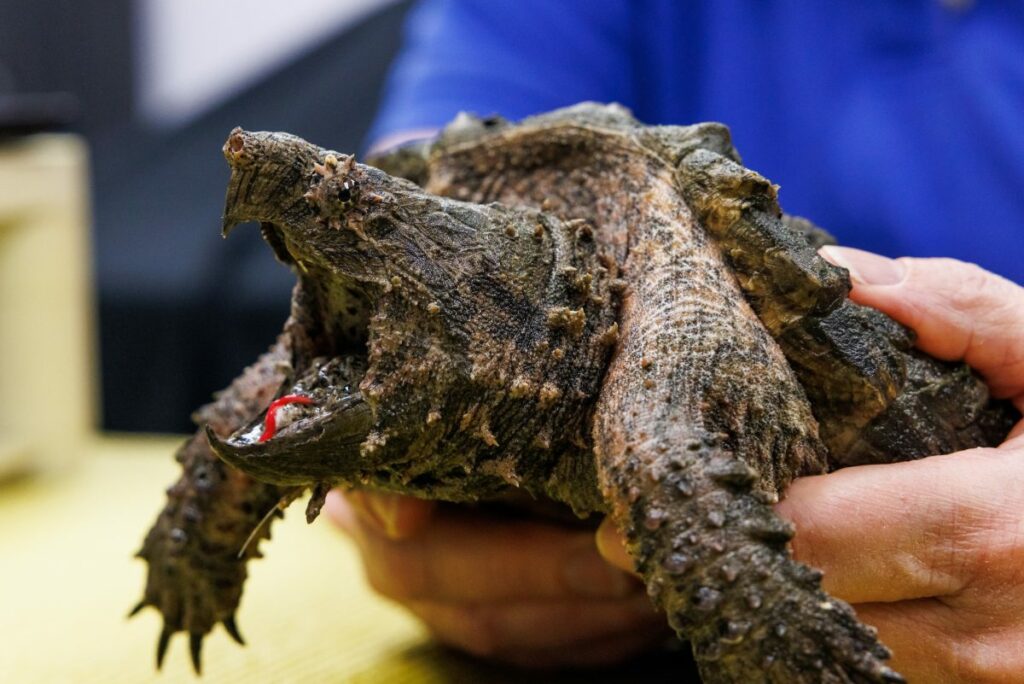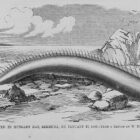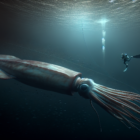Are alligator snapping turtles dangerous?

Alligator snapping turtles, known for their prehistoric appearance and massive size, are a species of freshwater turtles that inhabit waterways in certain regions of the southeastern United States. With its prehistoric appearance and powerful jaws, this ancient reptile has become the subject of numerous myths and misconceptions.
Prehistoric Turtles
The alligator snapping turtle, scientifically known as Macrochelys temminckii, is an impressive and ancient reptile, recognized for its distinctive appearance and formidable features. This freshwater turtle species is among the largest turtles in the world, boasting a prehistoric look that sets it apart.
Alligator snapping turtles are characterized by their robust build, sharp beak-like jaws, and a spiked carapace, or shell, which offers protection. These turtles can grow to substantial sizes, with some individuals weighing over 200 pounds and reaching lengths of more than two feet.
Their shells often display a textured, ridged appearance, resembling the rough texture of tree bark, while their skin showcases various hues of brown, gray, or black. Their eyes are situated on the sides of their heads, and they possess a long, fleshy tongue equipped with a pink, worm-like lure used to attract prey.
Risks and Behavior
These turtles are primarily aquatic and prefer freshwater habitats, dwelling in slow-moving rivers, lakes, and streams in the southeastern United States. They are mostly nocturnal, spending much of their time submerged in water, where they patiently wait to ambush their prey.
Alligator snapping turtles are formidable predators and skilled hunters. They use their powerful jaws and sharp beak to catch fish, crustaceans, and other aquatic creatures. They often lie motionless with their mouths open, using their fleshy tongue to lure prey, then quickly snap their jaws shut to capture their meal.
Alligator snapping turtles, if provoked or feeling threatened, can defend themselves by delivering powerful bites with their sharp, hook-shaped beaks. Their bite force is impressive, and their jaws are capable of causing significant damage to fingers or extremities, potentially leading to severe injuries.
Human Encounters
Encounters between humans and alligator snapping turtles are rare but can occur, particularly in situations where humans try to handle or interact with these turtles. Accidental encounters, such as stepping on or grabbing them while fishing, can lead to defensive behavior from the turtles, resulting in bites.
Conservation Status and Regulations
Due to concerns about their declining populations, alligator snapping turtles are protected in many areas. It’s illegal in certain regions to hunt or disturb these turtles due to their vulnerability and importance in their ecosystems.
Safety Measures
To minimize potential dangers, it’s advisable to avoid handling or attempting to interact with alligator snapping turtles in their natural habitat. Respecting their space and not attempting to provoke or handle them significantly reduces the risk of potential encounters.
Incidents involving alligator snapping turtles and humans are infrequent, yet they can pose risks when they occur. Typically, encounters stem from accidental interactions, such as inadvertently stepping on or attempting to handle these creatures. Due to their impressive size and powerful jaws, alligator snapping turtles can respond defensively when feeling threatened, potentially leading to bites.
Reports of incidents involving alligator snapping turtles typically involve defensive reactions by the turtles when disturbed or handled. Although such encounters are rare, the turtles’ sharp, beak-like jaws and their capacity for delivering powerful bites mean that if humans provoke them or intrude into their space, injuries can occur.
While alligator snapping turtles are not inherently aggressive, their impressive size and powerful jaws mean they can pose a risk if threatened or provoked. Coexisting with these magnificent creatures in their natural habitat involves appreciating their role in the ecosystem and ensuring human safety by maintaining a safe distance and exercising caution around these incredible reptiles.










